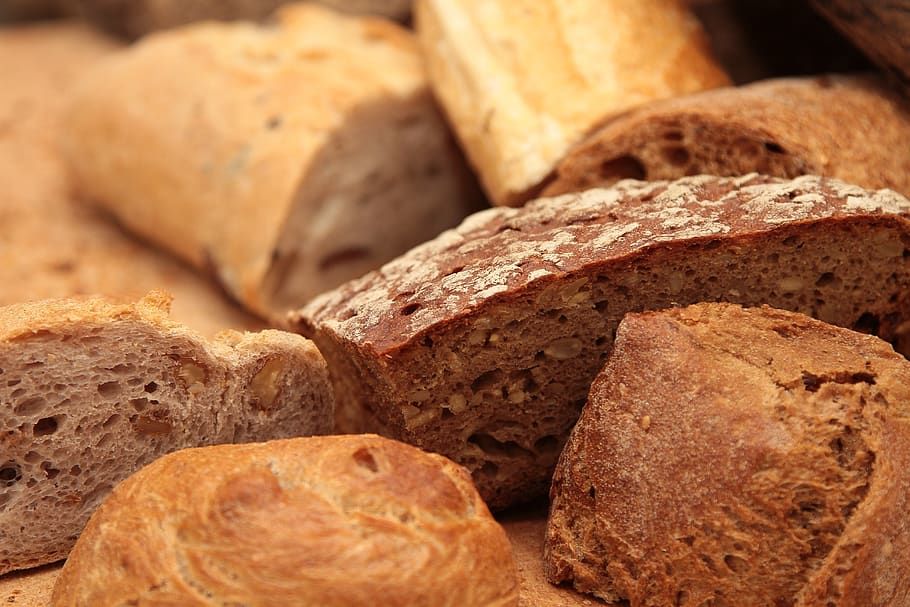25 basic baking techniques to help you avoid detours on the baking road!
Release time:
2024-07-24
Staling begins as soon as bread is out of the oven, with water loss and chemical changes in the starch structure. This happens faster in the refrigerator and almost stops in the freezer.

Recently, Xiaoyou learned that many baking enthusiasts are not actually engaged in baking-related professions and have not received orthodox training, but have always had a passion for baking.
Xiaoyou has compiled 25 basic baking tips for everyone today, hoping to help all friends who love baking and make baking easier~
If you are a novice, you should read it carefully!
Why does the toast shrink after baking?
A. The gluten is too strong.
B. The gluten is not relaxed enough during molding and the molding is too tight.
C. After baking, if the mold is not removed in time, it will lead to shrinking.
What is the reason for the wrinkles on the surface of the bread?
When the bread is molded, it is not relaxed enough; the moisture is too high in the final proofing stage, but the temperature difference is too large after it is out of the oven, which will cause the surface of the bread to wrinkle.
What is the percentage formula of ingredients in bread making?
Total weight of ingredients/total weight of flour *100%=ingredient%.
What is the role of fat in baking?
It can shorten the length of gluten, coat and lubricate gluten, so that gluten will not stick together.
How many steps are there in the baking process?
Whether it is bread, cake or biscuits, the baking process follows this process:
① The formation and expansion of gas (yeast and soda release carbon dioxide and water vapor).
② Condensation of gas in bubbles (bubbles in gluten, gas in protein paste).
③ Gelatinization of starch (starch absorbs water and starts to gelatinize when heated to about 60 degrees, giving the product a shape).
④ Coagulation of protein (protein begins to coagulate at 74℃).
⑤ Evaporation of some water (so baked bread will be very light, and undercooked ash will be heavier).
⑥ Melting of fat (different fats will melt at different temperatures and release gas).
⑦ Formation and coloring of crust (the moisture on the surface of the product evaporates and dries to form a crust, and milk, sucrose and eggs will increase the coloring).
Why shouldn't bread be refrigerated?
When bread is out of the oven, aging begins, with water loss and chemical changes in starch structure. This change will occur faster in refrigeration and almost stop in freezing.
Why is whole wheat flour with germ not easy to preserve?
Wheat germ contains a lot of oil and high nutritional content, but it is very easy to rancid.
Is bread flour the same as high-gluten flour?
Bread flour contains about 12% protein, while high-gluten flour should be above 14%.
What are the functions of several sugars (sweeteners) in baking?
① Increase sweetness and flavor.
② Soften gluten structure and delicate texture.
③ Increase surface color.
④ Maintain moisture and extend shelf life.
⑤ Mixed with oil, it can be used as an emulsifier, and mixed with eggs, it can be used as a foaming agent.
⑥ It is the object of yeast.
In bread making, equal amounts of milk ≠ equal amounts of water.
Fresh milk contains 88%-91% water, and the remaining solid matter is protein, lactose and minerals. Therefore, if milk is used instead of water in the recipe, a little more should be added to prevent the dough from being too dry.
What are the three types of whipping cream?
30%-35% low-fat fresh cream, 36%-40% high-fat fresh cream, and 48% heavy cream.
What grades can eggs be divided into according to weight (with shell)?
70g giant, 64g extra large, 57g large, 50g medium, 43g small, and 35g very small.
What is fermentation?
Fermentation is the process of yeast and sugar reacting to produce carbon dioxide and alcohol (alcohol will evaporate, and carbon dioxide will expand, thereby increasing the volume of the product).
What is the relationship between yeast activity and temperature?
1℃ inactive (storage temperature), low activity at 15-20℃, high activity at 20-32℃, above 38℃ - slow reaction, and inactivation at 60℃.
What are the two types of baking powder? What are the characteristics?
① Single-effect baking powder: It will produce gas immediately when it comes into contact with water. It is only used for products that are baked immediately after mixing.
② Double-effect baking powder: It releases some gas at low temperature, and will not react completely until heated. The batter can be left for a while after mixing.
Can gelatin powder and flakes be interchangeable?
Yes, except for the different processing methods, their functions are exactly the same. 1 teaspoon of gelatin powder = 2.8g.
What is the role of cooling bread after it is baked?
After baking, it should be placed on a wire rack to cool immediately to release excess moisture, alcohol produced during fermentation, and residual carbon dioxide.
How to keep the crust of soft-crust bread soft and tender?
You can brush a layer of melted butter on it before cooling it down after it is baked to effectively prevent the crust from hardening.
How should hard-crust bread (French) be stored?
It is best to eat it within 6 hours of storage at room temperature. Unless it is frozen, it cannot be wrapped, otherwise the crust of the bread will become soft and the texture will be as difficult to eat as leather.
How many methods are there for dough fermentation? What are the characteristics?
① Direct method: short time and quick effect, the flavor is not as good as the latter two.
② Refrigerated fermentation: good flavor; but time and temperature are not easy to control, easy to over-ferment.
③ Middle fermentation method: Middle fermentation is refrigerated fermentation; the production time is flexible, the amount of yeast is saved, the flavor structure is much better than the direct method, it is resistant to storage and not easy to age.
What are the direct method and middle fermentation method for bread?
The direct method is also called the primary fermentation method, which refers to the operation method that undergoes a primary fermentation procedure in the bread production process.
The middle fermentation method is also called the secondary fermentation method, which refers to the method that undergoes a secondary fermentation stage in the production process. After the fermentation stage, the bread can form a better network structure of the dough and produce a unique bread fermentation aroma. The secondary fermentation method makes the dough effect and characteristics more mature because of the longer fermentation time.
Why are salt and butter added at the end of mixing?
Because adding salt and butter at the same time with dry yeast will directly inhibit the growth of yeast, and adding salt at the end can shorten the mixing time.
What is the difference between high-sugar yeast and low-sugar yeast?
High-sugar yeast and low-sugar yeast are produced according to the adaptability of yeast to raw materials. High-sugar yeast is used when the sugar content in the formula is more than 10%; low-sugar yeast is used when the sugar content is less than 10%, and its effect is more ideal.
What is the difference between horizontal dough mixers and vertical dough mixers?
Horizontal dough mixers have a slower mixing speed and different physical effects, so it is difficult to fully expand the gluten, so they are usually pressed by a dough press to help the gluten combine. The mixing speed and mechanical structure of the vertical dough mixer can directly allow the gluten to fully expand during mixing.
The temperature is too hot in summer. Can ice cubes be added when mixing?
Yes, you should use slow mixing with the raw materials until they are dissolved before switching to fast mixing.
Tag:
Related News
ANHUI WEIMEIXIN FOOD CO., LTD
Investment Promotion: 0550-5356111, 18905400393
Headquarters: 148 Chuantang Road, Xianghe Town, Quanjiao County, Chuzhou City, Anhui Province

Meixin Bread Flagship Store
Copyright©2024 Anhui Weimeixin Food Co., Ltd.
Powered by:www.300.cn SEO

